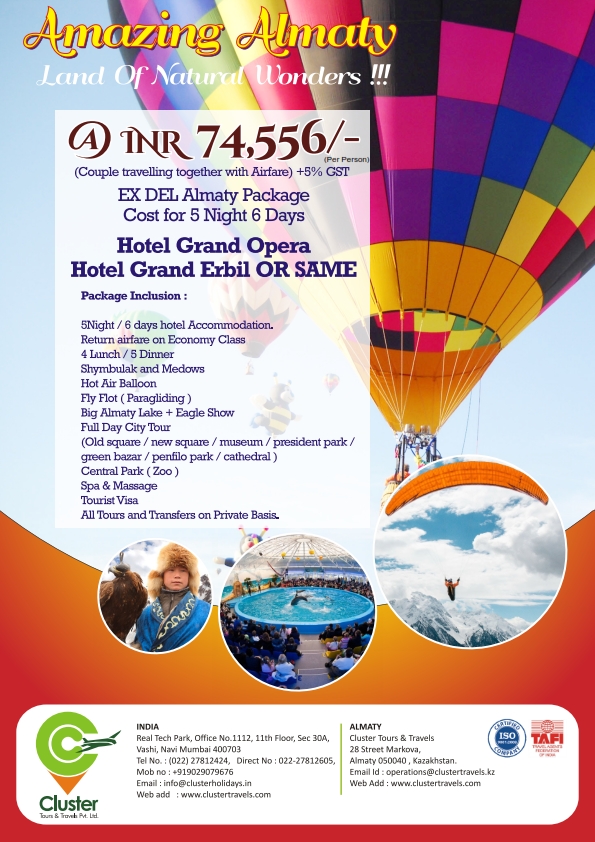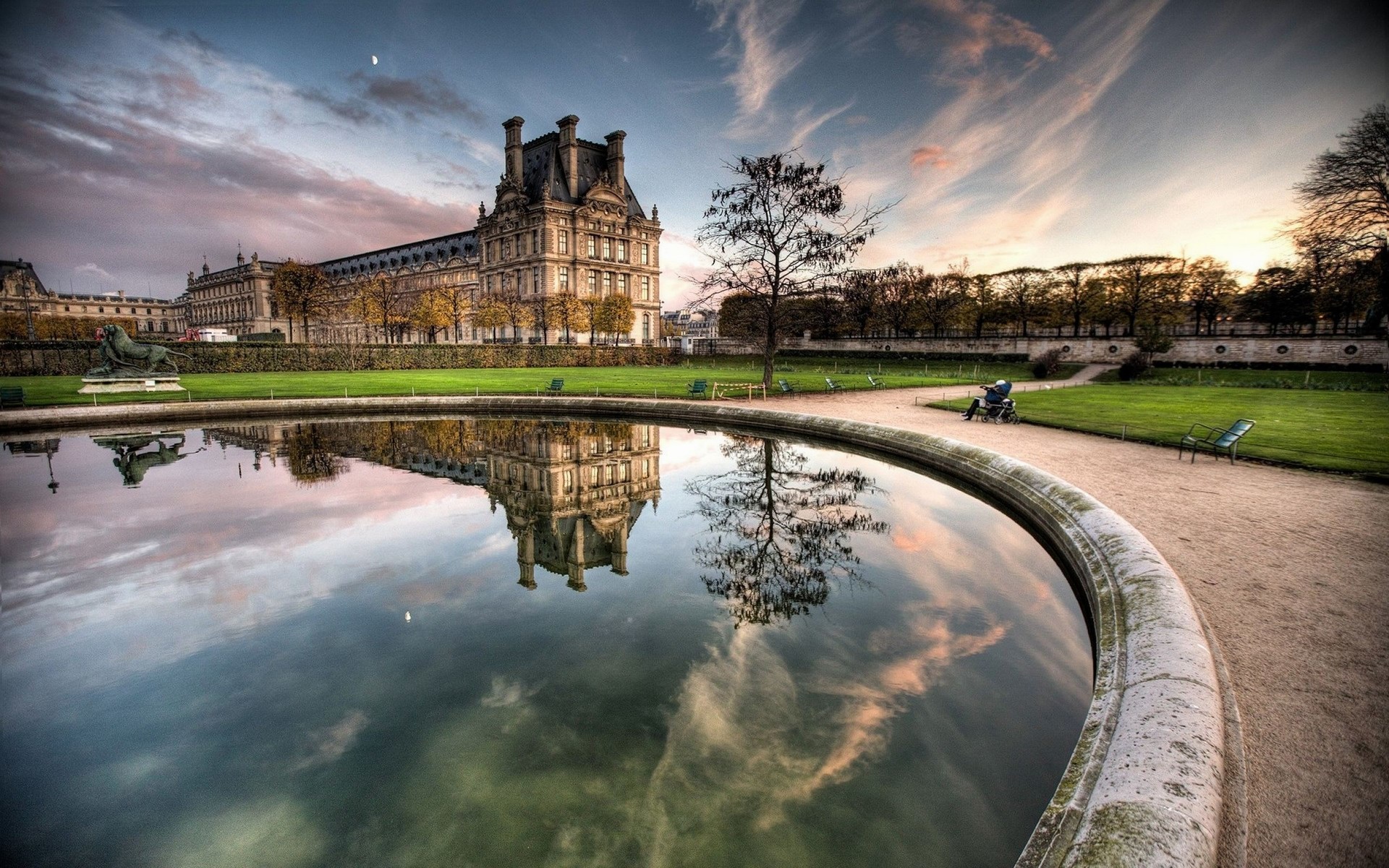
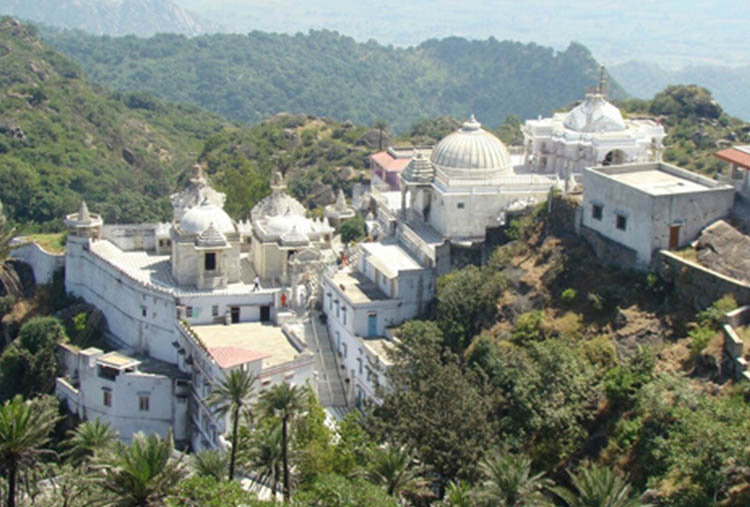
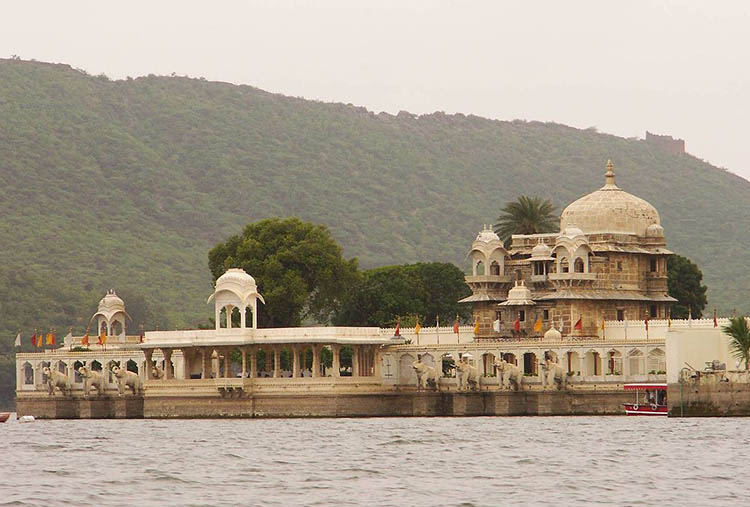
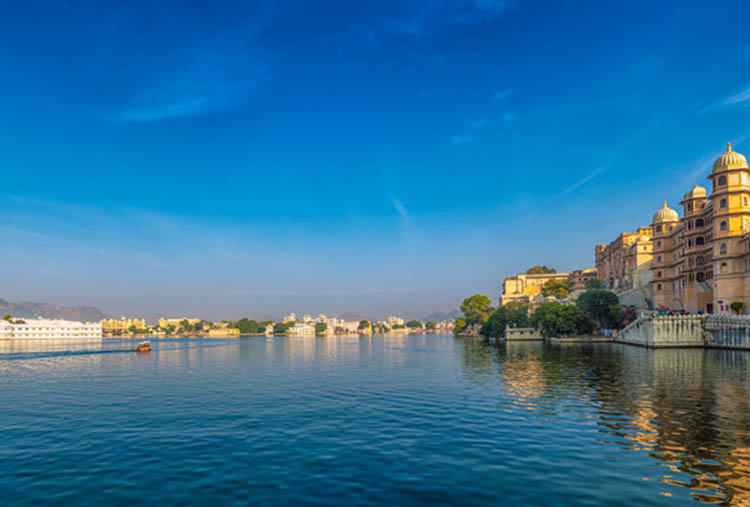

DAY 01 – AHMEDABAD – UDAIPUR (250 KMS)
Arrive Udaipur and transfer to your hotel.
Set on the shores of Lake Pichola and surrounded by hills, Udaipur grew in complete contrast to the harsh deserts of the rest of Rajasthan. As capital of the old Mewar State it was the only Rajput stronghold to uphold its Hindu allegiance in the face of Muslim invasion. This fairy – tale city, with its marble palaces and lakes surrounded by a ring of hills, was founded by Maharana Udai Singh in 1559. The city is dominated by massive City Palace, which overlooks Lake Pichola with its romantic island palaces. Picturesque havelis, ghats and temples line the lake front, with the lively bazaars of the old walled city stretching behind them.
Overnight at Hotel
DAY 02 – IN UDAIPUR
After breakfast proceed for half day city tour of Udaipur – visiting the City Palace and Museum. The largest palace complex in India, it is a blend of Mughal and Rajput influences. Also see the 17th century Jagdish temple, drive around the Fatehsagar Lake, and visit the Sahelion ki Bari (the Garden for the Maids of Honour), an ornamental pleasure garden with fountains and marble kiosks. Later visit the Bharatiya Lok Kala Mandir or the Folk Art Museum.
Later in the evening take a boat ride on the 4 km long and 3 km wide Lake Pichola, which is fringed with hills, palaces, havelis, ghats, embankments and temples and offers spectacular views of the city. Visit the Jag Mandir Island with its exquisite Gul Mahal Pavilion.
Overnight at Hotel
DAY 03 – UDAIPUR TO MOUNT ABU (200 KMS)
After breakfast drive to Jodhpur enroute visiting Ranakpur – is the largest Jain temple complex in India and dates to the 15th century. The main temple is dedicated to Adinath, the first Tirthankar. Intricate carvings detail mythological figures, patterns and motifs on the walls, pillars and domes. There are 1444 ornately carved marble pillars in the complex and none of them are similar. The beautiful lace-like interiors of the domes are a superb example of western Indian temple style. Surya temple and other Jain temples are side attractions. (Temples open only at 1200 Hrs. Leather belts, footwear, bare legs and black clothing not allowed)
Later continue to drive to Mount Abu; Arrive Mount Abu and transfer to your hotel. At 1200 meters, Mt. Abu is the highest point of the Aravalli Range passing through Rajasthan. The only hill resort of Rajasthan, it is built around a lake and is surrounded by forested hills. According to a legend, the place derives its name from Arbuda, a serpent who descended to the spot to rescue Shiva’s bull, Nandi.
Besides having all the features of a pleasant hill resort, Mount Abu is also a centre of pilgrimage for Jains on account of the famous Dilwara Temples. There are interesting treks and picnic spots, romantic royal retreats of various erstwhile royal families, and some relics of the Raj period.
Overnight at Hotel
DAY 04 – IN MOUNT ABU
After breakfast proceed for city tour of Mount Abu. Visit the breath taking Dilwara temples, among the finest examples of Jain architecture with their superb marble carving. The complex consists of five temples built between the eleventh and thirteenth century. The intricate ornamental carvings here represent the great heights reached in stone decoration. Also visit Nakki Lake, and see the strange rock formations around it including Toad Rock. The Achalgarh fort has the famous Achaleshwar temple and also provides superb views of the area.
DAY 05 – MOUNT ABU – AHMEDABAD (250 KMS)
After breakfast drive to Ahmedabad; Arrive Ahmedabad and transfer to your hotel.
Ahmedabad is Located on the banks of the river Sabarmati; the city was founded by Sultan Ahmad Shah in 1411. Today it is one of the fastest growing cities of India and is an immense repository of tradition, history & culture. Its famous walled area is one of the finest examples of community living & the city thrived as the textile capital & was nicknamed “Manchester of the East’ in 1888. This multicultural city is home to some of the finest Indo-Sarcenic mosques & Jain temples. The Sidi Sayed Ni Jaali with its delicately curved branches in a masterpiece carved in stone. The elaborate havelis of wealthy Guajarati Sethias are part of the city’s living heritage. In the early 20th century Ahmedabad grew an important center for nationalist activities after Mahatma Gandhi established two ashrams in the city- the Kochrab Ashram in 1915 and Sabarmati Ashram in 1917.The thriving city has always been the financial capital of Gujarat and after independence; international architects like Louis Kahn and Le Corbusier were commissioned to build modern architectural marvels in the city. While the former built the Indian Institute of Management (IIM) building in brick, le Corbusier designed the Shodhan and Sarabhai Villas, the Sanskar Kendra and the Mill Owner’s Association in stark concrete. Like any other mega-polis, Ahmedabad straddles the ancient and modern with equal poise.
Later proceed for city tour of Ahmedabad.
The old city with its narrow, meandering streets is a conglomeration of 600 pols, divided according to caste and occupation. Each pol or family estate is decorated with large gates and sometimes even sub-gates to increase the bond amongst families. There are over 12000 havelis and 100 chabutras or bird feeding platforms and the stately Badshah No Haziro, the resting place of Sultan Ahmed Shah. The ornate Jaalis amongst the pillared portico filter the afternoon sun to form remarkable shadows on the marble floor. Behind the mausoleum, is the Great Mosque or the Jami Masjid built in 1423 by the Sultan Ahmed Shah I.
During the sightseeing tour one can visit The Calico Museum with a prior permission from museum authority. The Calico Museum of Textiles, inaugurated in 1949, is today justly regarded as one among the foremost textiles museums in the world and an important India institution. Its outstanding collection of Indian Fabrics exemplifies handicraft textiles spanning five centuries and attracts increasing numbers of Indians and international research scholars. Most significant, it has become a major reference area for our surviving handicraftsmen and also for the India machine-textile industry. The museum encompasses too large an area its energies on the vast and vital field of handicraft textiles, devoting less and less time to industrial fabrics.
The museum conduct 02 hours guided tour every day, except Wednesdays and public holidays at 1030 Hrs to 1230 Hrs. Rights of admission to the Museum and the Galleries are reserved by the Management. (NO ENTRY AFTER 10:45 am)
Afternoon – visit Gandhi Ashram, Shreyas Folk & Art Museum, and Institute of Indology.
Evening Market at Law Garden displays beautiful textile handicrafts of Gujarat. Vishalla is a restaurant with traditional Gujarati food in village surroundings. It has Vichar Utensil Museum worth visiting. The museum houses a unique collection of utensils.
Overnight at Hotel
DAY 06 – DEPART AHMEDABAD
In time transfer to Ahmedabad Airport / Railway Station to board your flight / train for onward destination
Hotels Accommodation
Mail as per Itinerary
Economy Air Ticket
Tourist VISA
Travel Insurance
There is no content
1) Ahmedabad, in western India, is the largest city in the state of Gujarat. The Sabarmati River runs through its center. On the western bank is the Gandhi Ashram at Sabarmati, which displays the spiritual leader’s living quarters and artifacts. Across the river, the Calico Museum of Textiles, once a cloth merchant’s mansion, has a significant collection of antique and modern fabrics.
2) Udaipur, formerly the capital of the Mewar Kingdom, is a city in the western Indian state of Rajasthan. Founded by Maharana Udai Singh II in 1559, it’s set around a series of artificial lakes and is known for its lavish royal residences. City Palace, overlooking Lake Pichola, is a monumental complex of 11 palaces, courtyards and gardens, famed for its intricate peacock mosaics.
3) Mount Abu is a hill station in western India’s Rajasthan state, near the Gujarat border. Set on a high rocky plateau in the Aravalli Range and surrounded by forest, it offers a relatively cool climate and views over the arid plains below. In the center of town, Nakki Lake is a popular spot for boating. Close by are the centuries-old Dilwara Temples, ornately carved from white marble and of great spiritual importance.
Special Offers


